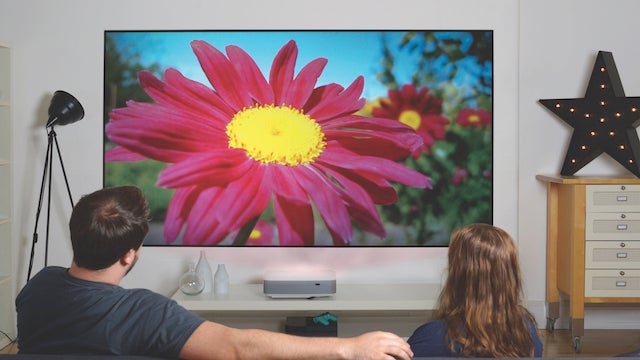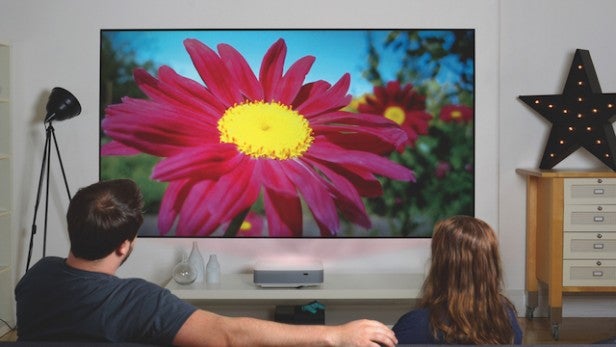Optoma ALR100 Review
Optoma ALR100
A projector screen for daylight viewing that actually works.

Sections
- Page 1 Optoma ALR100 Review
- Page 2 Picture Quality and Conclusions Review
Verdict
Pros
- Exceptionally effective at retaining black level in ambient light
- Easy to build
- Not expensive for this sort of screen technology
Cons
- Only works its best in fairly specific circumstances
- Available only in a fixed frame, 100-inch format
Key Specifications
- Review Price: £899.00
- 100-inch screen size
- Designed to support projector use in ambient light
- Fixed-frame design
- 0.42 gain
- Projector needs to be sited below the screen
What is the Optoma ALR100?
The ALR100 is an £899, 100-inch projection screen that’s specially designed to be used in ambient light. This makes it potentially much more straightforward for movie and sports fans to install a big-screen projector system in a typical living-room environment.
Optoma ALR100 – Design and Features
At the time of writing, the ALR100 was available only in a 100-inch size – delivered, as you’d expect, in a 16:9 aspect ratio. While other size options may come if the ALR100 proves a success, 100 inches seems a logical size for Optoma to have picked as its starting point. It’s big enough to deliver a cinematic experience comfortably beyond the bounds of any remotely affordable television, but not so big that it won’t fit on a typical wall.
In addition, the black metal frame around the screen is impressively thin (16mm), so you don’t have to worry about this adding further inches of real estate.
Related: Best Projector 2016
The ALR100 is currently only available in a fixed-frame design, due to the rigid nature of its structure versus vinyl screens. This means it will have to be on permanent display, rather than being something you can roll up when not in use. Then again, its ambient light abilities mean that it may well end up as your everyday TV, rather than simply for watching the odd movie.
This projector screen’s ambient light abilities are down to two unique design features. First, its almost metallic-looking finish and glossy black substrate form a special optical structure that absorbs ambient (non-direct) light. Second, small, angled horizontal ridges built onto the the screen’s surface deflect light from above away from the picture.
Optoma claims that in ideal conditions the ALR100’s design can provide a contrast ratio that’s 10 times better than that of a typical matte white screen.
Other key claimed advantages of the ALR100 versus other types of ambient light screen technology are wide viewing angles, no issues with “hotspots” – where light pools in parts of the screen – and that the screen can be wiped clean if you somehow get some muck on it.
Optoma ALR100 – Setup
The ALR100 is impressively easy to build. The four sides of the screen fit together with minimal fuss, and getting the roll-out screen material rigid is no more complicated than slotting a number of springs through holes in the frame and in the screen. There’s no need for tensioning screws or fiddly Velcro adjustments.

As a result of the way the ALR100’s anti-ambient light design works, the ideal position for the projector is below the screen. To achieve its optimum contrast, the images from your projector need to angle up to the screen at 15 degrees, while ambient light from above should be at an angle of 40 degrees or less.
Even if your projector and ambient light angles aren’t perfect, you can still benefit from the ALR100 – provided you don’t ceiling-mount your projector so that it angles downwards.

